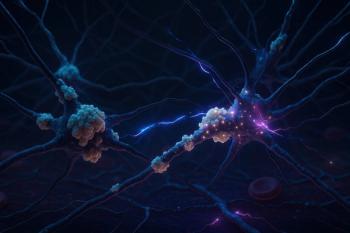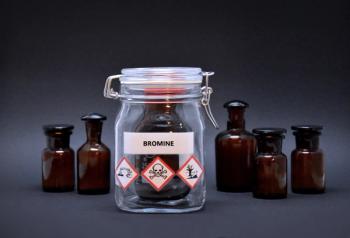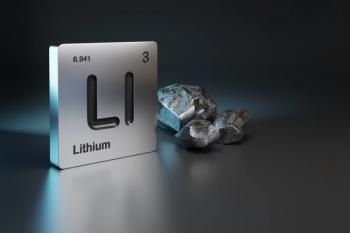
- Vol 42, Issue 2
Aggression as a Potential Target for Treatment
Key Takeaways
- Aggression is not a diagnostic feature of psychiatric disorders but is often linked to mental illness and emergency presentations.
- The dopamine D4 receptor, particularly its polymorphisms, is associated with aggression, suggesting a potential target for treatment.
CLINICAL REFLECTIONS
Violence and aggression are not diagnostic features of any psychiatric disorder. Nonetheless, many individuals associate these symptoms with mental illness, and they are often the precipitant for emergency presentations and hospitalization.1 Additionally, society associates severe mental illness with both aggression and violence, a belief that is reinforced by media, politicians, and others.2,3 Yet, excluding substance use, the rates of aggression and violence by patients with psychiatric disorders are similar to those occurring in the general population.4 Despite the fact that aggression has not been identified as a symptom of any specific psychiatric disorder, it is still seen as a consequence of associated disorders. Treatment of aggression is currently constrained within treatment of the associated disorder. However, there are sufficient data to suggest that it is reasonable to view aggression itself as a potential target for treatment.
Pathophysiology of Aggression
Several studies have attempted to discern the physiologic congenators of aggression. Although there are many findings, most are probably associations rather than causative. The most reproducible and important of these studies have been associations of polymorphisms of the dopamine D4 receptor with aggression.5 DRD4 is the gene that codes for the dopamine D4 receptor. It is found on the short arm of the 11th chromosome. Stimulation of D4 activates the inhibitory G protein second messenger system (Gai) and inhibits cyclic adenosine monophosphate formation.6 D4 is expressed in the frontal cortex, where it is much more common than the D2 receptor,7 as well as in the thalamus, hypothalamus, and olfactory bulb.8 The DRD4 gene has a polymorphic third exon. This part of the gene codes for the third cytoplasmic loop of the protein, which interacts with the Gai second messenger.9 The polymorphism presents as a variable number of repeats within this 48–base pair section. In the population, the number of repeats varies between 2 and 11 times. A common variant is the 7-repeat allele, which is best known for its association with attention-deficit/hyperactivity disorder.10-13 But it has also been associated with novelty seeking,14-17 impulsivity,15,18 anger,16 and aggression.19 This association gains importance when one becomes aware that D4 antagonists with high affinity that exceeds affinity for D2 by the same drug have significant antiaggression properties.5 The
Antiaggression Agents
The most effective antiaggression agent available is clozapine.24 This has been repeatedly demonstrated in open studies25-28 as well as in randomized trials.29-31 In the blinded, randomized studies, clozapine was superior to risperidone, olanzapine, and haloperidol. Specifically, the likelihood for aggressive behaviors after study entry was significantly lower for clozapine (17.5%) vs olanzapine (23.1%), risperidone 24.4%, and haloperidol (45.9%).29 Measured aggression was significantly less likely to happen with clozapine than haloperidol (physical aggression: OR, 2.04; P < .001; aggression against property: OR, 1.85; P < .001; and verbal aggression: OR, 1.35; P < .001) and olanzapine (physical aggression: OR, 1.33; P < .001; and verbal aggression: OR, 1.32; P < .001, but not aggression against property: OR, 1.10; P = .78). (Risperidone was not examined in this study).31 In this same study, olanzapine was also superior to haloperidol (physical aggression: OR, 1.54; P < .001; aggression against property: OR, 1.67; P < .001, but not verbal aggression: OR, 1.03; P = .57).31 In a comparative study that examined the hostility items of the Positive and Negative Syndrome Scale, clozapine was the only agent that significantly reduced measured hostility vs baseline (P = .019) and was superior to risperidone (P = .012) and haloperidol (P = .021) but not olanzapine.30 More importantly, this effect occurred at therapeutic dosage and was independent of clozapine’s antipsychotic effect or the occurrence of sedation.25,30,31 Clozapine is also effective in a genetic animal model of a developmental disorder (immediate early gene transcription factor, Egr3, knockout) in which the animals become aggressive.32
Similarly, asenapine has also demonstrated antiaggression effects in a prospective study comparing asenapine with treatment as usual (TAU) for 48 patients who were admitted with significant aggression.33 Asenapine was superior to TAU as measured by the Modified Overt Aggression Scale (MOAS). There was a significant reduction in physical aggression (–8.0 ±5.06 vs –0.78 ± 2.40; P < .0001) and total aggression (–14.7 ± 11.59 vs –5.4 ± 10.12; P = .045) as measured by the MOAS.33 More recently, a post hoc analysis of hostility in 442 patients with schizophrenia treated with a transdermal formulation of asenapine found that hostility improved independent of antipsychotic effect and after correcting for covariates, indicating that the antihostility effect is independent of the antipsychotic effect.34 Sublingual asenapine has also demonstrated significant reductions in hostility, irritability, and disruptive behavior vs placebo in participants experiencing acute mania.35 Asenapine may be effective quickly, and in a randomized, placebo-controlled study of agitation in a mixed diagnosis sample (schizophrenia, bipolar disorder,
Loxapine is a second-generation antipsychotic agent that was not identified as such prior to the introduction of clozapine.37 It has a long history of treating aggression, hostility, and agitation in patients with
Olanzapine and risperidone also have D4 affinities that exceed D2 affinities (
Some of these agents have affinity to D4 that exceeds the affinity for D2 (ie, affinity D4 to affinity D2 > 1).5 Clozapine clearly has the best data and is likely superior to other agents. It is superior to risperidone, olanzapine, and haloperidol. It would appear that when a patient presents with aggression as an important symptom, targeting that symptom may have a greater impact than treating the underlying disease.
Concluding Thoughts
When aggression is the predominant clinical target symptom, agents with greater affinity to the D4 receptor than the D2 receptor may be preferred. Clozapine, which has the greatest difference between the affinity to these 2 receptors, has been found to be superior in head-to-head studies. Furthermore, it appears that the efficacy of antipsychotic agents for aggression is related to the D4:D2 ratio, although the data are not adequate to be certain of this last point.
Aggression that occurs in patients with psychiatric disorders may frequently fuel psychiatric presentation to either the emergency or inpatient setting. Clinicians tend to choose treatments based on the diagnosis. However, if aggression is a major issue, it may be reasonable to choose a treatment that has demonstrated efficacy to address aggression. The availability of agents that have demonstrated efficacy in aggression should be considered when choosing treatments for patients who present with aggression as a primary symptom.
Dr El-Mallakh is a professor in the department of Psychiatry and Behavioral Sciences and director of the Mood Disorders Research Program at the University of Louisville School of Medicine in Louisville, Kentucky. Dr Aydin is a postdoctoral researcher at the University of Louisville School of Medicine in Louisville, Kentucky.
References
1. Girasek H, Nagy VA, Fekete S, et al.
2. Pescosolido BA, Monahan J, Link BG, et al.
3. McGinty EE, Kennedy-Hendricks A, Choksy S, Barry CL.
4. Elbogen EB, Johnson SC.
5. El-Mallakh RS, McKenzie CE.
6. Neve KA, Seamans JK, Trantham-Davidson H.
7. de Almeida J, Mengod G.
8. O’Malley KL, Harmon S, Tang L, Todd RD.
9. Van Tol HH, Wu CM, Guan HC, et al.
10. Ding YC, Chi HC, Grady DL, et al.
11. Grady DL, Chi HC, Ding YC, et al.
12. Nikolaidis A, Gray JR.
13. Tovo-Rodrigues L, Rohde LA, Roman T, et al.
14. Becker K, Laucht M, El-Faddagh M, Schmidt MH.
15. Zalsman G, Frisch A, Lewis R, et al.
16. Dmitrieva J, Chen C, Greenberger E, et al.
17. Matthews LJ, Butler PM.
18. Comings DE, Gonzalez N, Wu S, et al.
19. Fresan A, Camarena B, Apiquian R, et al.
20. Peprah K, Zhu XY, Eyunni SV, et al.
21. Li P, Snyder GL, Vanover KE.
22. Singh AN, Barlas C, Singh S, et al.
23. Seeman P, Corbett R, Van Tol HH.
24. Frogley C, Taylor D, Dickens G, Picchioni M.
25. Buckley P, Bartell J, Donenwirth K, et al.
26. Wilson WH, Claussen AM.
27. Rabinowitz J, Avnon M, Rosenberg V.
28. Essock SM, Frisman LK, Covell NH, Hargreaves W.
29. Volavka J, Czobor P, Nolan K, et al.
30. Citrome L, Volavka J, Czobor P, et al.
31. Krakowski MI, Czobor P, Citrome L, et al.
32. Gallitano-Mendel A, Wozniak DF, Pehek EA, Millbrandt J.
33. Amon JS, Johnson SB, El-Mallakh RS.
34. Citrome L, Komaroff M, Starling B, et al.
35. Citrome L, Landbloom R, Chang CT, Earley W.
36. Pratts M, Citrome L, Grant W, et al.
37. Ferreri F, Drapier D, Baloche E, et al.
38. Deniker P, Loo H, Cottereau MJ.
39. Feldman HS.
40. Tuason VB.
41. Allen MH, Feifel D, Lesem MD, et al.
42. Lesem MD, Tran-Johnson TK, Riesenberg RA, et al.
43. Kwentus J, Riesenberg RA, Marandi M, et al.
44. Ruch T, Nuss S, Yeruva RR, et al.
45. Kapur S, Zipursky RB, Jones C, et al.
Articles in this issue
10 months ago
Who Are the Youth With Undiagnosed ADHD Symptoms?10 months ago
Using CBT to Empower Black Patients10 months ago
Monitoring Managed Care: RevisitedNewsletter
Receive trusted psychiatric news, expert analysis, and clinical insights — subscribe today to support your practice and your patients.











